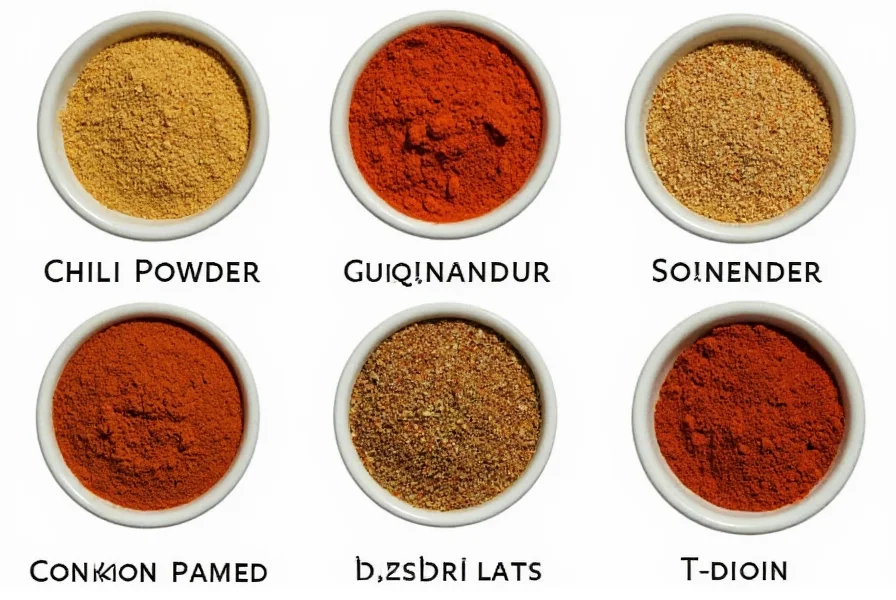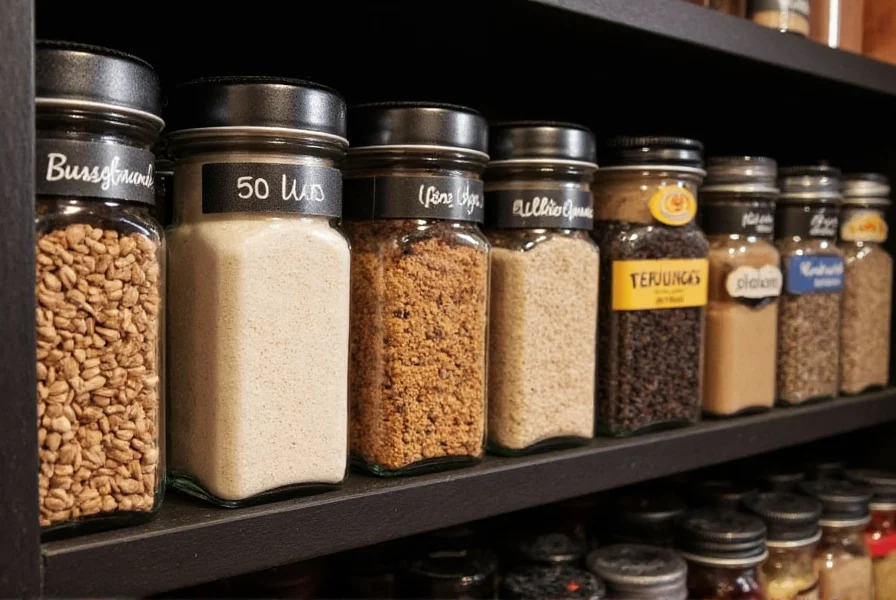If you've reached for your cumin jar only to find it empty, don't panic. Many home cooks face this common kitchen dilemma. Understanding which spices can effectively replace cumin's distinctive earthy, warm, and slightly citrusy flavor will save your recipe without requiring a grocery run. The right substitute depends on your specific dish and what spices you have available in your pantry.
Understanding Cumin's Unique Flavor Profile
Cumin brings a distinctive earthy warmth with subtle citrus notes and a hint of bitterness that's essential in many global cuisines. Its complex flavor comes from compounds like cuminaldehyde, which gives cumin its characteristic aroma. When seeking a cumin replacement, you're trying to replicate this specific combination of earthiness, warmth, and subtle citrus notes without creating an off-flavor in your dish.
Professional chefs know that successful spice substitution isn't just about finding a single replacement but understanding how different spices interact. The best cumin substitute for chili differs from what works in Indian curries or Middle Eastern dishes. This knowledge helps you make informed decisions when adapting recipes based on available ingredients.
Top Cumin Substitutes Compared
| Substitute | Flavor Profile | Best For | Substitution Ratio |
|---|---|---|---|
| Chili Powder | Earthy, mild heat, slightly sweet | Mexican dishes, chili, tacos | 1½ tsp per 1 tsp cumin |
| Coriander | Citrusy, floral, lighter earthiness | Lighter dishes, curries, dressings | 1 tsp per 1 tsp cumin |
| Custom Blend | Earthy, warm, balanced | General cooking, versatile | 1 tsp per 1 tsp cumin |
| Garam Masala | Warm, complex, slightly sweet | Indian dishes, stews | ¾ tsp per 1 tsp cumin |
| Taco Seasoning | Herby, slightly tangy, mild heat | Tacos, fajitas, Tex-Mex | 1½ tsp per 1 tsp cumin |
Best Cumin Substitutes by Cuisine Type
Mexican and Southwestern Dishes
For authentic Mexican flavors when you need a cumin replacement in recipes like chili or tacos, chili powder provides the closest approximation. Most commercial chili powders contain cumin already, making them ideal substitutes. Use 1½ teaspoons of chili powder for every teaspoon of cumin called for. If making homemade chili powder, combine paprika, garlic powder, and a touch of cayenne for better results.

Indian and Middle Eastern Cooking
When substituting cumin in Indian recipes, garam masala works surprisingly well due to its warm, complex profile. Use ¾ teaspoon of garam masala per teaspoon of cumin. For Middle Eastern dishes like falafel or hummus, coriander provides the citrusy notes that complement cumin's profile. Many Middle Eastern cooks actually use coriander alongside cumin, making it a natural substitute when cumin is unavailable.
General Cooking Applications
For everyday cooking where you need a versatile cumin alternative, create a custom blend of equal parts ground coriander, dried oregano, and smoked paprika. This combination captures cumin's earthiness while adding complementary flavors. The blend works particularly well in soups, stews, and roasted vegetable dishes. Use this mixture at a 1:1 ratio to replace cumin in most recipes.
Creating Effective Custom Blends
Professional chefs often create custom spice blends when specific ingredients are unavailable. For a more accurate cumin substitute, try this chef-recommended blend:
- 1 part ground coriander (provides citrus notes)
- ½ part smoked paprika (adds earthiness)
- ¼ part turmeric (contributes warmth)
- ¼ part garlic powder (enhances savory notes)
Mix these ingredients thoroughly and store in an airtight container. Use this blend at a 1:1 ratio to replace cumin. The small amount of turmeric won't noticeably color your dish but will enhance the warm, earthy profile that makes cumin distinctive.
What NOT to Use as Cumin Substitute
Some common suggestions for cumin replacement simply don't work well. Avoid using:
- Cinnamon - Too sweet and lacks earthiness
- Nutmeg - Overpowering and doesn't replicate cumin's profile
- Cumin seeds - Not a substitute but the whole form (use ½ tsp seeds = ¼ tsp ground)
- Curry powder alone - Contains cumin but has additional flavors that may overwhelm
Many online sources mistakenly suggest these options, but they'll alter your dish's flavor profile significantly. Understanding which spices don't work as cumin replacement saves you from disappointing results.
Storage Tips for Your Substitute Spices
Since you're using alternative spices, proper storage becomes crucial for maintaining flavor. Ground spices lose potency faster than whole spices. Store your cumin substitutes in airtight containers away from heat and light. For best results, replace ground spices every 6 months. If you frequently need cumin replacement options, consider keeping small quantities of key substitutes like coriander and smoked paprika specifically for these emergencies.

When to Adjust Other Recipe Elements
Sometimes when using a cumin substitute, you may need to adjust other elements of your recipe. If using coriander as your cumin replacement in recipes, you might want to add a pinch of smoked paprika to restore some earthiness. When substituting chili powder for cumin, reduce additional salt since many chili powders contain salt. These small adjustments help maintain the intended flavor balance of your dish.
What's the best cumin substitute for chili?
Chili powder makes the best cumin substitute for chili recipes, using 1½ teaspoons of chili powder for every teaspoon of cumin required. Most chili powders already contain cumin along with complementary spices like garlic and paprika that work well in chili recipes.
Can I use coriander instead of cumin in Indian cooking?
Yes, coriander works as a cumin substitute in many Indian dishes, but use it at a 1:1 ratio and consider adding a pinch of smoked paprika to restore some earthiness. For better results in Indian recipes, try using garam masala at ¾ teaspoon per teaspoon of cumin.
How much taco seasoning equals one teaspoon of cumin?
Use 1½ teaspoons of taco seasoning to replace one teaspoon of cumin. Most commercial taco seasonings contain cumin already along with complementary spices like paprika and garlic powder that work well in Mexican dishes.
Does cumin taste like curry powder?
Cumin is actually an ingredient in most curry powders, but curry powder has additional spices like turmeric, coriander, and fenugreek. While curry powder can work as a cumin substitute in some dishes, it will add additional flavors that may alter your recipe's intended taste profile.
Can I make my own cumin substitute blend?
Yes, create a versatile cumin replacement by mixing equal parts ground coriander, dried oregano, and smoked paprika. For enhanced flavor, use a blend of 1 part coriander, ½ part smoked paprika, ¼ part turmeric, and ¼ part garlic powder. Store your custom blend in an airtight container for up to 6 months.










 浙公网安备
33010002000092号
浙公网安备
33010002000092号 浙B2-20120091-4
浙B2-20120091-4